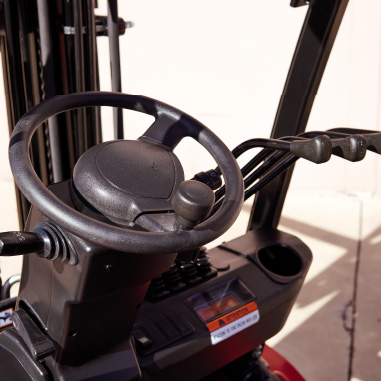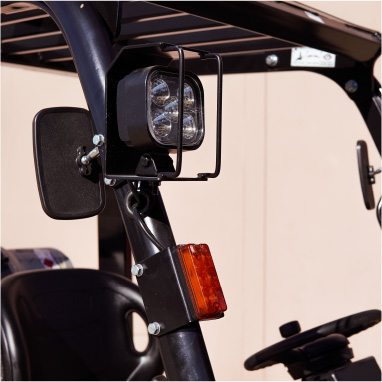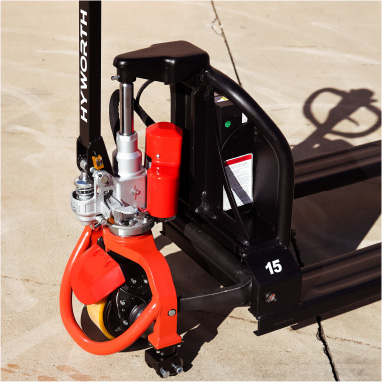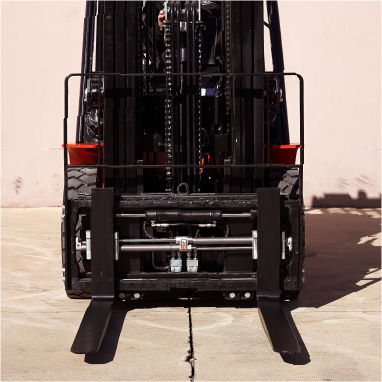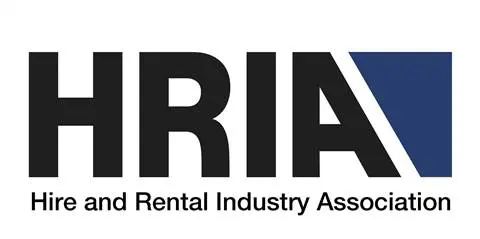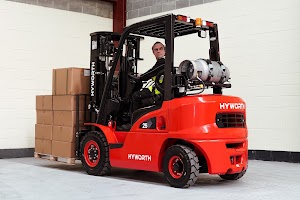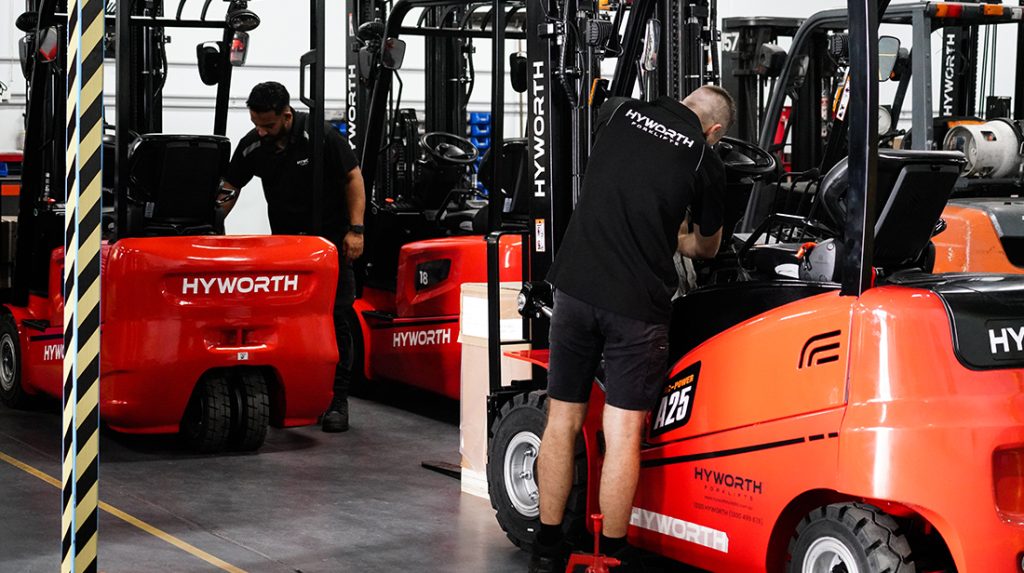
Getting your forklift ready for the day ahead is just as crucial as your first cup of coffee. Think of the forklift pre-start checklist as the quick health check your forklift needs every morning to ensure it’s ready to go without any hitches.
Why make this a daily thing? Well, it’s all about keeping you and everyone around safe while making sure your forklift is in tip-top shape to avoid any unexpected downtime. It’s like giving your forklift a quick pep talk before the day begins, making sure it’s all good to carry the load – literally.
So, stick with us as we walk through the nitty-gritty of the forklift pre-start checklist. It’s your first step to a smoother, safer day around the warehouse or job site. Let’s get into why this checklist is your forklift’s best mate for the day ahead.
The importance of a forklift pre-start checklist
Running a forklift without giving it a proper once-over can be a bit like flying blind – it’s risky and, frankly, a bit of a gamble. That’s where the forklift pre-start checklist comes in your daily operations.
First off, safety isn’t just a nice-to-have; it’s a must. Without ticking off each item on your checklist, you’re stepping into a world where accidents are more likely. These checks are designed to catch any potential hazards before they catch you, ensuring everyone goes home safe at the end of the day.
Efficiency isn’t to be overlooked. Regular checks keep it running smoothly, minimising downtime and keeping your operations on track. Think of the forklift pre-start checklist as your daily dose of efficiency – a small effort for a big payoff in keeping your forklift, and business, moving forward without a hitch.
Before starting the forklift: Pre-operational checklist
Getting your forklift ready isn’t just about turning the key and heading off. A thorough forklift pre-start checklist ensures your machine is safe, sound, and ready to work hard. Let’s break down this checklist into visual checks, physical inspections, and fluid levels to make sure your forklift is in prime condition.
Visual checks
Start with a good look around. Check the tyres for any wear or damage that could affect stability or safety. Then, move on to the lights, making sure all are working and visible. The body of the forklift should be free from significant damage that might compromise safety. A glance at the mast and attachments is also crucial; they should be secure and undamaged. These visual checks are quick but vital steps to catch any issues before they become problems.
Physical checks
Now, let’s get hands-on. Ensure the LPG bottle, if your forklift uses one, is secure and leak-free. Battery connections should be tight and corrosion-free for safe and efficient operation. Double-check that all attachments are securely fitted and that the tynes show no signs of wear or damage. These physical inspections help ensure the forklift operates smoothly and safely.
Check of liquid levels
Lastly, dip into the liquids. The hydraulic fluid, brake fluid, and engine oil levels need to be within the recommended range for optimal performance. Coolant is essential for preventing overheating, so check it’s topped up. And, of course, ensure there’s enough fuel to run the forklift. Keeping these fluids in check means your forklift won’t let you down when you need it most.
Operational checklist
Once the engine hums to life, it’s time for the operational part of our forklift checklist. This phase is just as crucial as the initial checks, ensuring everything works perfectly not just in theory, but in practice too.
Hand brake test
Kick things off by testing the hand brake. It should hold the forklift firmly in place, a non-negotiable for safety when loading or unloading.
Transmission checks
Next, gently cycle through the transmission. Whether you’re moving forward or reversing, the response should be immediate and smooth. This ensures your forklift can handle precise movements, especially in tight spaces.
Brakes and steering
Now, test the brakes and steering. Brakes should be responsive without any delay or strange noises. Steering should feel smooth and effortless, giving you full control over the forklift’s movements.
Lift control inspection
Check the lift control next. It should raise and lower smoothly, without any jerks or stalls, ensuring you can move loads safely and efficiently.
Inspect additional devices
If your forklift is equipped with extra features like side shifts or tilt controls, now’s the time to check those too. Every device should operate correctly, enhancing your forklift’s functionality.
Warning signals
Finally, don’t forget the warning signals. Horns, lights, and reversing beepers are your communication tools. They need to be loud and clear to alert everyone around them about the forklift’s movements.
Maintaining your forklift
Beyond the daily forklift pre-start checklist, regular maintenance is key to keeping your forklift running smoothly. Think of it as the ongoing care that complements your daily checks, ensuring your forklift not only works well today but continues to do so for years to come.
Regular servicing: Just like any hardworking machine, your forklift needs regular professional check-ups. Scheduling these with a trusted technician ensures that any wear and tear is caught early and dealt with. This can significantly extend the life of your forklift and maintain its efficiency.
Keep it clean: It might sound simple, but keeping your forklift clean is crucial. Dust, debris, and grime can lead to problems over time. A clean forklift is a happier and often healthier forklift.
Monitor performance: Keep an eye on how your forklift is performing. If something feels off, it probably is. Early detection of issues can save you from bigger, costlier problems down the line.
Documentation: Keep a record of all maintenance and repairs. This history can be incredibly useful for troubleshooting future issues and is also important for compliance and resale value.
Conclusion
Wrapping up, the forklift pre-start checklist and operational checklist isn’t just a good habit—it’s a crucial step for ensuring safety, legality, and efficiency in your operations. These checklists keep you ahead of the game, preventing accidents and downtime while ensuring compliance with safety standards.
We encourage you to make these pre-operational and operational checks a non-negotiable part of your daily routine. And remember, Hyworth Forklifts is here to support you every step of the way. From servicing to advice on maintaining your forklift in top condition, we’ve got you covered. Reach out to us for any assistance you need to keep your forklift—and your business—moving smoothly.
Let’s make safety and efficiency our top priorities. Start every day with your forklift pre-start checklist, and let’s keep the workplace safe for everyone.
Printable checklist
Visual checks
Tyres: Check for wear and damage.
Lights: Ensure all are working.
Body: Look for any significant damage.
Mast and attachments: Check for security and damage.
Physical checks
LPG bottle: Ensure it’s secure and leak-free (if applicable).
Battery connections: Must be tight and corrosion-free.
Attachments: Confirm they are securely fitted.
Tynes: Check for wear or damage.
Check of liquid levels
Hydraulic fluid: Verify it’s within the recommended range.
Brake fluid: Ensure it’s topped up.
Engine oil: Check level and quality.
Coolant: Confirm it’s at the right level to avoid overheating.
Fuel: Make sure there’s enough for the day’s tasks.
Operational checks
Hand brake: Test for secure holding.
Transmission: Check for smooth forward and reverse movement.
Brakes and steering: Ensure responsiveness and ease of movement.
Lift control: Test for smooth raising and lowering.
Warning signals: Check horns, lights, and reversing beepers for functionality.
Maintenance and care
Regular servicing: Schedule with a professional.
Cleanliness: Keep the forklift clean from debris and grime.Performance monitoring: Be vigilant of changes in performance.
Documentation: Maintain records of maintenance and repairs.
